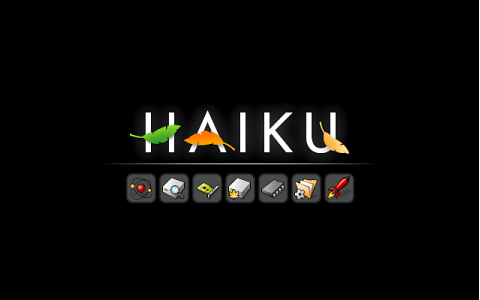Il Boot Loader
Il Boot Loader di Haiku può essere di aiuto nel caso si verifichino problemi con l'hardware in uso, oppure quando si hanno più installazioni di Haiku e si vuole scegliere quale avviare (ad esempio un'installazione su CD o penna USB).
È utile anche quando viene installato un componente che impedisce l'avvio del sistema operativo. Consulta questa guida alla sezione Risoluzione dei problemi per maggiori dettagli.
Per entrare nelle opzioni del Boot Loader di Haiku bisogna premere il tasto SHIFT prima dell'inizio del processo di avvio. Se è presente un gestore dell'avvio (boot manager), è possibile cominciare a premere il tasto SHIFT prima di selezionare la voce di Haiku. Altrimenti se Haiku è l'unico sistema operativo installato nella macchina, è sufficiente premere il tasto appena compaiono i messaggi di avvio del BIOS.
On computers that use UEFI for booting instead of the classic BIOS, you need to use the SPACEBAR instead of SHIFT.
 Opzioni del Boot Loader
Opzioni del Boot Loader
Una volta caricato, appariranno quattro menu:
| Select boot volume/state | Per scegliere quale installazione/stato del sistema avviare (vedi Risoluzione dei problemi per ulteriori dettagli). | |
| Select safe mode options | There are several options to try in case of hardware related trouble or if the system becomes unstable or unbootable because of a misbehaving add-on. When moving the selection bar to an option, a short explanation appears at the bottom of the screen. | |
|
| ||
| Select debug options | Here you'll find several options that help with debugging or getting details for a bug report. Again, a short explanation for each option is displayed at the bottom. | |
|
| ||
| If is activated, a warm reboot after a crash shows these additional options: | ||
|
| ||
| Select screen resolution | Lets you force a certain screen resolution and color depth. |
 Troubleshooting
Troubleshooting
If Haiku refuses to boot on your hardware from the get-go, try out setting different options under . Consider filing a bug report in any case.
On the other hand, if Haiku only suddenly acts up after you have installed some software, especially hardware drivers, you have several options to get Haiku bootable again so you can uninstall the offending package:
Activating will prevent most servers, daemons and the UserBootscript from being started.
Activating will prevent using any add-ons (drivers, translators, etc.) you have installed in the user hierarchy under your Home folder.
If activating solves your troubles by falling back to VESA graphics, you can make the setting permanent by removing the # of the line #fail_safe_video_mode true in the text file /boot/home/config/settings/kernel/drivers/kernel.
If the offending driver, add-on etc. is installed in the system hierarchy, things get a bit more complicated, because that area is read-only. Here, the comes into play. With it, you can navigate through the whole system hierarchy and disable the component that's messing things up for you by checking an entry with the SPACE or RETURN key. ESC returns you up one level to the parent directory.
Online, there's the guide Disabling components of packages showing how to make that setting stick.
Under you can specify what former "version" of Haiku to boot. Every time you un/install a package, the old state is saved and you can boot into it by choosing it from the list presented in the boot loader options.
So, if you encounter boot problems after installing some package, boot a Haiku state from before that time and uninstall the offending package. You can permanently revert to a specific Haiku revision as described in the topic SoftwareUpdater.
 Booting Haiku
Booting Haiku
Dopo aver attivato una o più opzioni, è possibile tornare al menu principale e avviare normalmente il sistema che si presenterà con questa schermata di avvio:

Se tutto funziona perfettamente, le icone nella schermata si illumineranno una dopo l'altra.
Le icone corrispondono grossomodo alle diverse fasi di caricamento dell'OS e sono:
| Atomo | Inizializza i moduli del kernel. | |
| La lente di ingrandimento sul disco | Crea "rootfs" (/) e monta "devfs" (/dev). | |
| Scheda elettronica | Inizializza il gestore delle periferiche. | |
| Disco di avvio | Monta il disco di boot. | |
| Il chip | Carica i moduli specifici della CPU. | |
| La cartella | Finisce di inizializzare il sottosistema. | |
| Il razzo | Launch_daemon has started the system. |